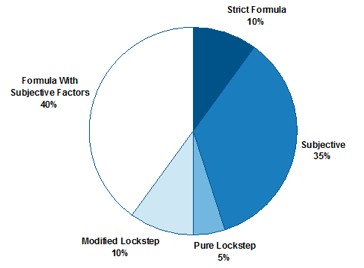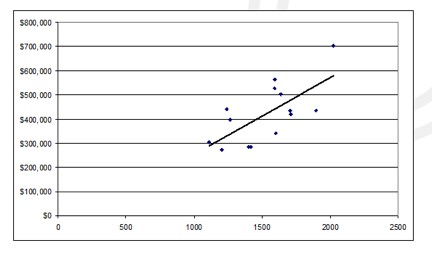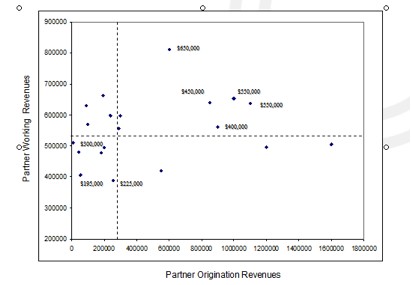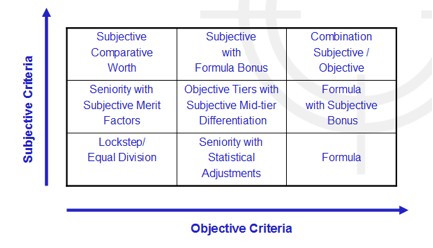Tweaking Compensation
Of course, there is no perfect compensation system. The unique culture and values of a firm dictates how it splits up profits. What seems like a fair system in a good year may be viewed as painfully draconian in a bad year. Not surprisingly, any individual lawyer’s satisfaction with the current plan is directly related to how they personally fair under its provisions. Nevertheless, there is a constant demand in most law firms to “tweak” the compensation system – make small changes to improve its accurate reflection of the comparative worth of partners.
Since law firm partners are bound and determined to incessantly talk about compensation, it seems appropriate to provide the following basic template to structure their thinking.
Forms of Compensation
Many partners assume that most large firms operate on a highly objective, pure formulaic system – what is often labeled “eat what you kill.” By our observation, however, only about 10% of large firms use a strict formula. Roughly one-third of firms have a system that is subjectively determined by a compensation committee based on consideration of data, interviews with partners, recommendations by firm leaders and similar inputs. We estimate that only about 5% of firms use a pure lockstep system where profits are evenly divided among partners or seniority is the sole determinant of compensation, but another 10% have a modified lockstep system where the seniority-based rise up the compensation ladder may be affected by performance factors. The remainder (about 40%) is some combination of two or more of these factors, most frequently an objective system that can be modified by subjective input.
While there does not appear to be a direct correlation between a firm’s profitability and its form of compensation, it is our observation that lockstep firms tend to be relatively profitable. By the same token, the least profitable firms often seem to have highly objective compensation systems.
Testing the Appropriateness of a Compensation System
In looking at a compensation system, the two most significant issues seem to be what specific performance or which traits are being rewarded and how the most and least productive partners are being compensated in relation to each other.
Surprisingly, what law firm compensation systems actually reward is often quite different than what the partners think they are rewarding. One interesting test is to graphically test the correlation between compensation and various factors, including some factors that are not supposed to be part of the consideration. This can be done by preparing an Excel spreadsheet XY (scatter) graph to show the data points where compensation and another factor meet, and creating a trend line (“chart” / “add trend line” on the toolbar).
If there is a perfect correlation between the factor and compensation, the line will go up from left to right at a perfect 45° angle. The closer the data points are to the line, the more accurate the correlation. So, for example, in a lockstep system a graph of compensation and years of practice should produce a perfect 45° angle with all of the data points directly on the line. The flatter or more vertical the line, the less of a correlation. A line that angles downward from left to right would indicate an inverse correlation. The factors with the highest correlation are the factors given the greatest weighting in the compensation system.
Typically, correlative factors may be billable hours, total hours, originations, working attorney collections, age, years of practice and similar performance criteria. You can have a little fun with this by considering non-traditional factors such as height, shoe size or years of marriage.
In most cases the test of a compensation system is how partners are being treated at the extremes, i.e., the most and least productive partners. Doing this is a two step process of determining who falls into these categories, and then how they are being compensated.
Typically, performance as a practicing lawyer is objectively measured by a combination of originations and work performed. To measure this, create an XY (scatter) graph of annual working performance (in dollars or hours) and dollars of origination (or billing attorney credits if that is more applicable). Then calculate the mean value of each of the two factors and place a dotted line for each on the chart. This will create four quadrants. Partners in the upper right quadrant are those who have the highest combination of work and originations. Partners in the lower right hand quadrant are those who have the lowest work and billing performance. Then label each data point with the annual compensation of that partner.
While compensation may involve a much wider variety of factors, this exercise often highlights the issues that are of the greatest concern and dissatisfaction.
Tweaking
In typical lawyerly fashion, discussions about a firm’s compensation system often immediately escalate to a systemic consideration of the overall compensation system. While radical reform has a nice ring to it, it has been our experience that, in reality, small changes in a compensation system are often both all that is needed and the limit of partners’ tolerance for change.
For example, the diagram below shows the nine most common law firm partner compensation systems by their comparative degree of objectivity and subjectivity. It has been our experience that the most change that can be successfully accepted and implemented is a movement between connected boxes, i.e. one box in any direction. In reality, however, what is required are often small changes in emphasis within a box. Like so many things, less is often more.
Compensation vs. Management
Clearly a firm needs a procedure for dividing and distributing its profits and that system ought to reflect the values of the partners and be highly accepted by them. But often firms attempt to substitute compensation for management in motivating partners.
The difficulty is that most partners are not economic folk; that is, they are not motivated solely by economics. Indeed, at the compensation levels of most partners the after tax effect of differences in compensation are often negligible. As a result, it is hard to get a partner to change behavior through changes in the compensation system because the reward is not sufficiently significant to be a motivating factor.
However, in many law firms where few expectations are explicitly stated, partners depend on looking to the compensation system as a clue to what behavior the firm is seeking from its members. To this extent, subtle changes in the factors recognized in setting compensation may be tremendously magnified in the message sent to the partners about the expectations of performance. Accordingly, even small changes can result in the creation of more problems than they correct.
Chuck Noll, the legendary, four-time Super Bowl winning coach of the Pittsburgh Steelers was asked what rule changes he would like to see in the NFL. He answered that he didn’t care – just tell him what the rules are and keep them the same for five years. That’s probably good advice for law firm compensation systems.








